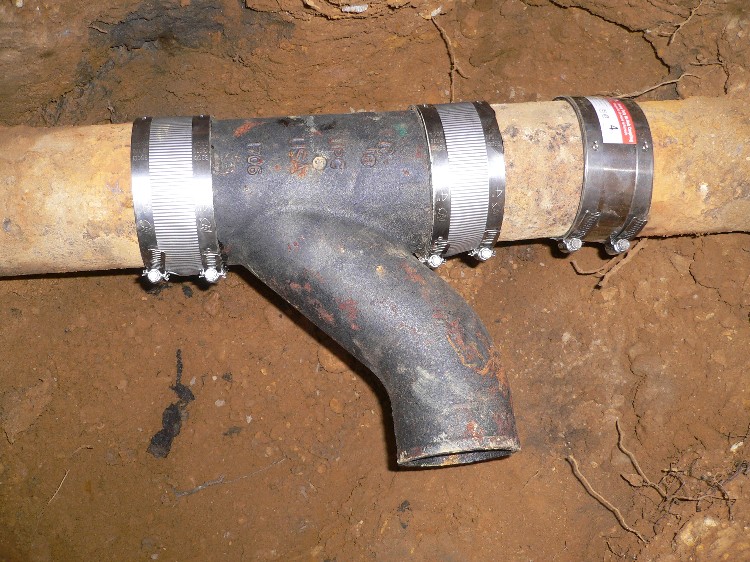Bcarlson78248
Member
I dug up my basement floor to access the existing 1940 4" cast iron drain pipe and add a new floor drain connection. I cut the CI pipe in two places and added in the connection for the new drain using 4" pvc and two No-Hub (metal banded) Fernco fittings for PVC to CI . However, on one side I am getting a drip from the fitting. This is the fitting I used (http://www.homedepot.com/p/Fernco-4-in-EPDM-Rubber-Coupling-P3005-44/100147217?keyword=p3005-44)
The old cast iron pipe had quite a bit of dirt/corrosion on the outside and I think the rubber collar and metal band are not making a good seal. I already tried to wire brush the outside of the pipe, but it still has some rough areas where the fitting slides over and the band clamps on. I can tighten up the bands some more, but want to get my torque wrench out first to make sure I don't get carried away and go well beyond the recommended 60 inch lbs.
Can I use some type of sealant between the rubber fitting and the cast iron pipe to allow for the roughness of the pipe? The rubber collar is already a tight fit on the pipe, so the no-hub fitting seems to be sized right.
Thanks,
Bruce
The old cast iron pipe had quite a bit of dirt/corrosion on the outside and I think the rubber collar and metal band are not making a good seal. I already tried to wire brush the outside of the pipe, but it still has some rough areas where the fitting slides over and the band clamps on. I can tighten up the bands some more, but want to get my torque wrench out first to make sure I don't get carried away and go well beyond the recommended 60 inch lbs.
Can I use some type of sealant between the rubber fitting and the cast iron pipe to allow for the roughness of the pipe? The rubber collar is already a tight fit on the pipe, so the no-hub fitting seems to be sized right.
Thanks,
Bruce


